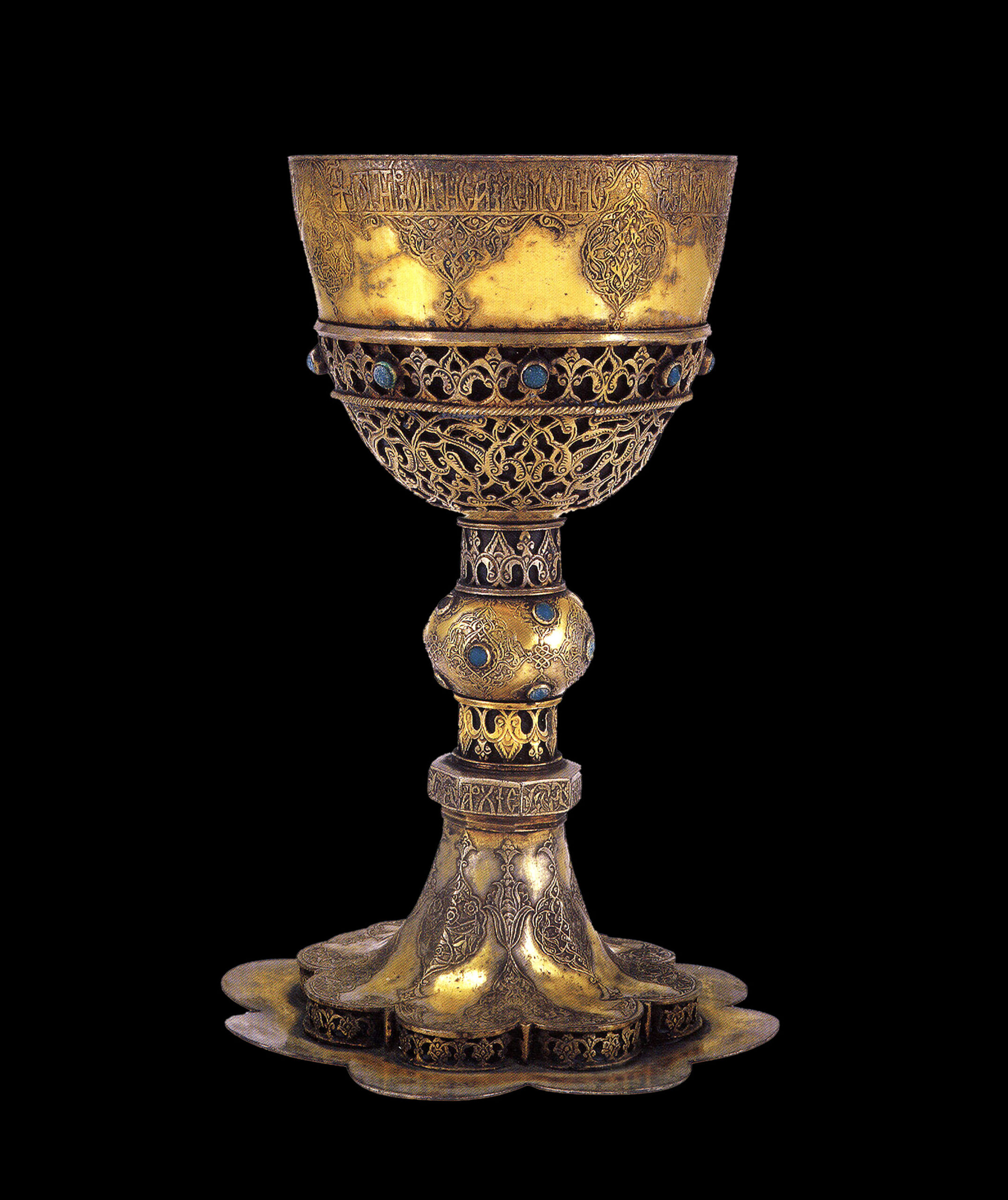

Chalice made of gilded silver and bronze and gemstones
The cup of the chalice is of silver gilt and has an inscription around its rim. Lower down, it is decorated with engraved half and whole palmettes. The hemispherical canistrum has pierced-work decoration of arabesques and blue semiprecious stones. The cylindrical stem, made of gilded bronze, has a spherical knob in the middle with engraved palmettes and blue stones. Its base, also of gilded bronze, curves outwards into eight horizontal lobes which rest upon a low perforated stem that in turn ends in eight undecorated lobes. Between the stem and the base, an octahedral ring is inscribed with the name “Theoleptos the high priest”, which probably refers to Patriarch Theoleptos II, who also donated the chalice to a monastery on Naxos. The chalice is an outstanding example of the silverwork developed by the Orthodox craftsmen of the Ottoman Empire, especially in the Pontus region. Although its shape echoes Late Gothic models, its palmette decoration has its origins in Ottoman art. It was quite common for Orthodox silversmiths and embroiderers to incorporate Ottoman decorative motifs into works intended for Christian worship. Their presence indicates luxury and Christian artisans keeping in step with the prevailing artistic trends of the period.
PUBLICATION
Skampavias K. 2007. Catalogue no. 222, in Skampavias K.—Chatzidakis N. (eds), Paul and Alexandra Canellopoulos Museum.Byzantine and Post-Byzantine Art, Athens, 440–441.
